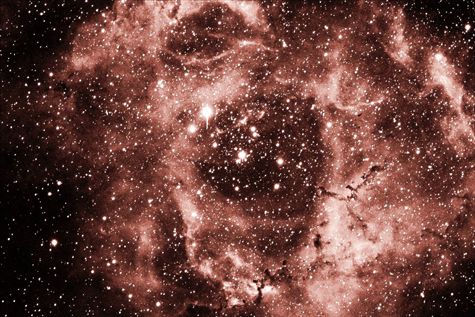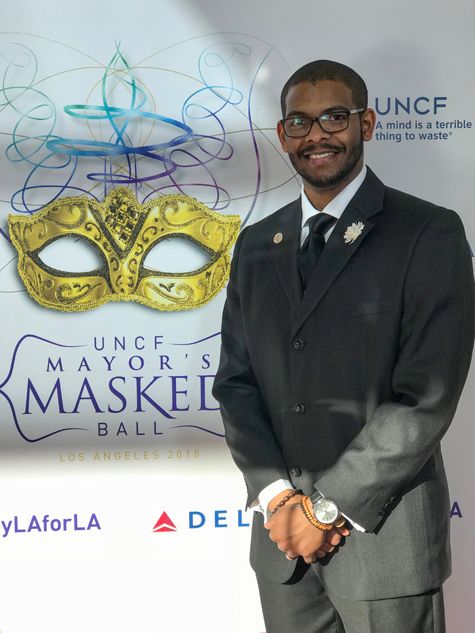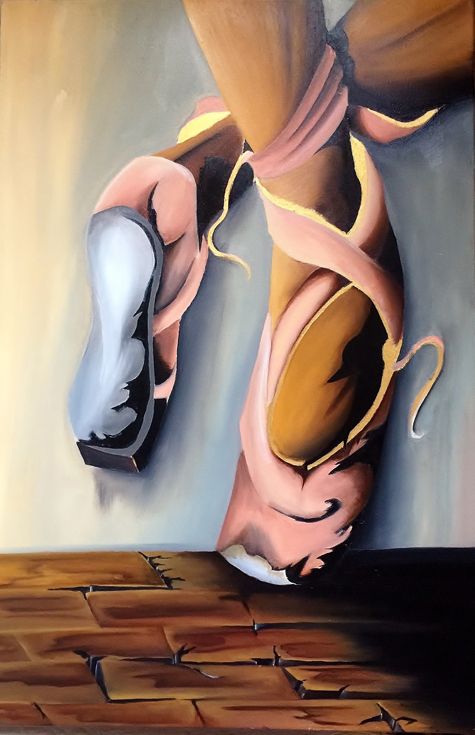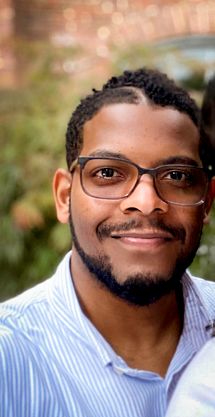Early Career Scientist Spotlight
Dr. Ronald Gamble (he/him/his)
Theoretical Astrophysicist
Astrophysics Science Division (660)
Did you always know that you wanted to be a Theoretical Astrophysicist?
Honestly, I didn’t. I always knew I wanted to study how the universe works, and some of the exotic objects in it, like black holes and quasars, but not specifically as a “Theoretical Astrophysicist”. When I first became interested in astronomy as a child, there was no one in my community that knew anything remotely close to what astronomy was as a subject. That’s when I decided to become immersed in the sciences; so that I could be one of the first from my community to work in the field of astronomy/astrophysics. My mother recalls, vividly, that I first mentioned wanting to work for “NASA” when I was four years old crunching on cereal in front of my solar system placemat.
What is your research focus?
My work is centered around theoretical studies of the relativistic jets emitted by classes of active galactic nuclei, or accreting supermassive black holes, called BL Lac Blazars and Flat-Spectrum Radio-Loud Quasars. I use field-theoretic methods to derive equations and compute numerical models that describe the physics governing the interplay of gravitational and magnetic fields within the inner most regions of Supermassive Black Holes billions of times more massive than our Sun. It is a "paella" of General Relativity, Astroparticle phenomenology, electromagnetism in curved spacetime, and the causality (cosmological cause and effect) that connects everything together.
The questions I look to answer are: “Is there a correlation between jet variability and SMBH mass-energy flux?”, and “Can the luminosity profile and radiation variability of a relativistic jet be described using the laws that govern black hole mechanics?”

Credit: Ronald Gamble
How did you end up working at NASA Goddard?
I sent a cold email to an upcoming job announcement at NASA Goddard not expecting any communications. A few weeks later, I was invited by the Deputy Director and other lab chiefs in the Gravitational Astrophysics and X-Ray Astrophysics labs to give seminar talks on my research involving a theoretical description of deformations of spacetime geometry around rotating black holes. The gravitational implications and astrophysical applications of my work as an extension of General Relativity for strong sources of gravity is still being explored. This work was a continuation of my doctoral research that was conducted independently, while also working full-time as a Postdoctoral Fellow of the National Strategic Research Institute & Defense Threat Reduction Agency. Weeks later I received another request to give a talk, but this time it was in front of the hiring chair for the CRESST-II NASA cooperative in the astronomy department at the University of Maryland—College Park. My position as a CRESST scientist is part independent research for future missions and part being a driving force for diversity, equity, and recruitment efforts for the Astrophysics Science Division at NASA.

Credit: Ronald Gamble
What are your future research interests and goals?
The sky is the limit! In the future I want to continue to conduct my own research to support future mission concepts as a Civil Servant or even a Lab Chief at NASA Goddard. I envision a long career at Goddard and hope to become a trailblazer in astrophysics so that other underrepresented minorities can see that great science is for EVERYONE. In the future I want to start a minority mentorship program at NASA that “brings the science to the community”, partnering with a national network of universities and institutions.
Scientifically, I want to extend my research on Blazars and Relativistic Jets to include a gravitational wave component as a potential source. Gravity continues to be a mysterious force of nature and its dynamics are still not fully understood.
What research accomplishment are you most proud of?
I’m most proud of the work I completed for my dissertation in graduate school. I had the incredible opportunity in becoming the FIRST to complete and defend a doctoral dissertation in Theoretical Astrophysics at North Carolina A&T State University in Greensboro, NC. It took 7 years to complete, beginning preliminary work in my junior and senior years of undergrad and continuing until finishing as a doctoral fellow. It is the body of work that I am most proud of because no one else had derived the theory before me…and it actually worked! It was 192 pages of my own independent research that I led in graduate school. I wasn’t a part of a big research group, and I certainly didn’t have a “blank check” to fund my work either. I was the PI of my work, and it was both scary and exciting at the same time. But it was well-worth persevering through.

Credit: Ronald Gamble
What keeps you inspired by your work?
Unfortunately, the lack of diversity and equity in the field of astronomy and astrophysics inspires me to keep my head held high and continue to work hard on my research and mentoring efforts. It’s a hard truth, but this a part of my reality as an Afro-Latino Ph.D. level scientist.
Ultimately, my wife Candis, my mother Adriene, and my mentor Dr. Abebe Kebede, will always be my inspiration to keep working hard on my research, to persevere and not give up during the tough times.
What is a fun fact about you?
A fun fact about me is that aside from being a nerdy Astrophysicist, I am also an Oil Painter and Graphic Designer with 16 years of experience under my belt. I have sold paintings across the US and internationally, designed a special mural for the City of Raleigh Census campaign, and, just recently, illustrated a 90-page children’s journal published this past spring called “The Link 2 Join Hearts: Parent & Me Journal”!

Credit: Ronald Gamble
Biography
Home Town:
Raleigh, North Carolina
Undergraduate Degree:
B.S. Physics, North Carolina Agricultural & Technical State University, Greensboro, NC
Post-graduate Degrees:
M.S. Experimental Condensed Matter Physics, North Carolina Agricultural & Technical State University, Greensboro, NC
Ph.D. Computational Science & Engineering (Theoretical Astrophysics), North Carolina Agricultural & Technical State University, Greensboro, NC

